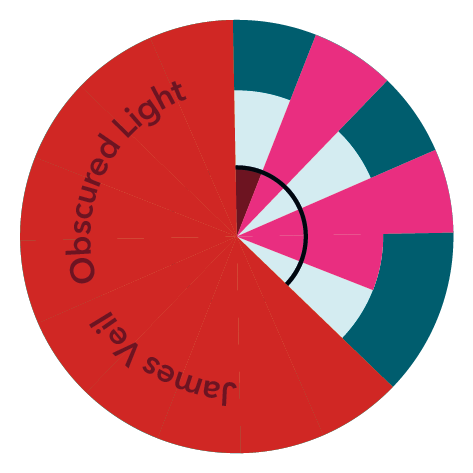Thanks
First, I'd like to acknowledge the help of my longtime creative collaborator: Harry Wheeler in Hamilton, Ontario. This installation also comes directly out of conversations and creative input from members of my Art Salon: Dr. Rachel May, Lali Khalid, Kristine Granger, Devos Art Museum Curator Emily Lanctot and my wife Dr. Kiki Krzakowski. Thanks to Alex Kralova for providing the space for this new contemporary art gallery called The Creative House. To all of who have come to experience the installation, thank you for coming tonight [November 3rd, 2017).
Installation Art
I'd like to speak for a brief time about the work that I have created here as part of this solo installation - the theatre lighting, the posters and the music, and about the artists who have influenced me.
Installation Art can be defined as a work where the artist takes place as a point of departure, what we call the site. You may have heard of site-specific works for example. Some people work outside the studio, like the Land Artists who work earth, the mountains and even the lightning around us as their material. James Turrell frames the natural light in the sky in his Sky Spaces and Roden Crater for example.
Some installation artists work inside the white cube, the art gallery being a recreation of the artists’ studio which the public can enter. Bob Irwin worked particularly with both natural and electric light inside the cube. Lawrence Weschler's study of this contemporary artist Seeing is Forgetting the Name of the Thing One Sees was a foundational text for me, as Irwin explains how the work of art, the field on which it is displayed, the features of the site, and the quality of light which illuminates it, the whole situation combines to make the viewer's art experience.
Ryan McGinness addresses in this way an expansive view of the site. As a graphic designer, he works with shape and line, and his art commodities are presented as part of immersive murals. He works with light and color, particularly the interaction of printer's ink and light for luminescence effects such as Joseph Albers taught us. Recently McGinness showed a series of nudes in electric neon light installed in the site - kind of a drop into the red light district of fine art :)
As an installation artist I've worked here with the entire volume of this site, the light inside it, the space both visually and aurally. The title of this installation is Obscured Light. I’d like to talk about Light, how we process light and images, and how memory can obscure meaning.
Change in our lives leaves remnants and artifacts: after-images. These luminescent after-images are stored in the brain through the neurological processes of sensation and perception. We create mental narratives around these images as they happen, and these stories are stored with the image, and these stories can change as we recall the the memory. So from my perspective, memories change over time in a dance of meaning with our changing circumstances, and therefore fluid consciousness. My work is based on that relativist worldview.
The posters here show some of the essential after-images that exist for me, that haunt me. The themes in these works are family, migration and the idea of home. Subjects include Yorkshire sheep, ladders, cold war radio signal stations, childhood rooms, cosmic events like our recent eclipse. The memories are imbued with dramatic narrative and emotional valence, but nonetheless the essential form of the remaining image is there, despite the relative interpretation.
Sounds are embedded with memory, and are perhaps the kind of hauntings that I am most familiar with. The rhythms that repeat in my head, or the first three notes of a song. The music I have composed for this installation has both a musical component and an environmental component. You’ll hear musical characteristics such as harmonic structures, instrumentation, performance, but also the environmental sounds like the readout of spy number codes, an enormous Soviet radar that sounds like a hover of helicopters, the repeat of a common photocopier, Buddha Machines™, Roman bells. Influenced by the ambient techno of The KLF and The Orb and the experimental sound art of Juana Molina, and Anna Meredith, this composition, which premieres tonight, aims to create a full immersion into this installation called Obscured Light.
Maybe you can make some of you own connections to these after-images. In this sense, each individual, each person, senses the installation through the veil of their mind, of themselves. The viewer completes the work, and so all this work therefore resides not here in the space, but in the viewers mind.
